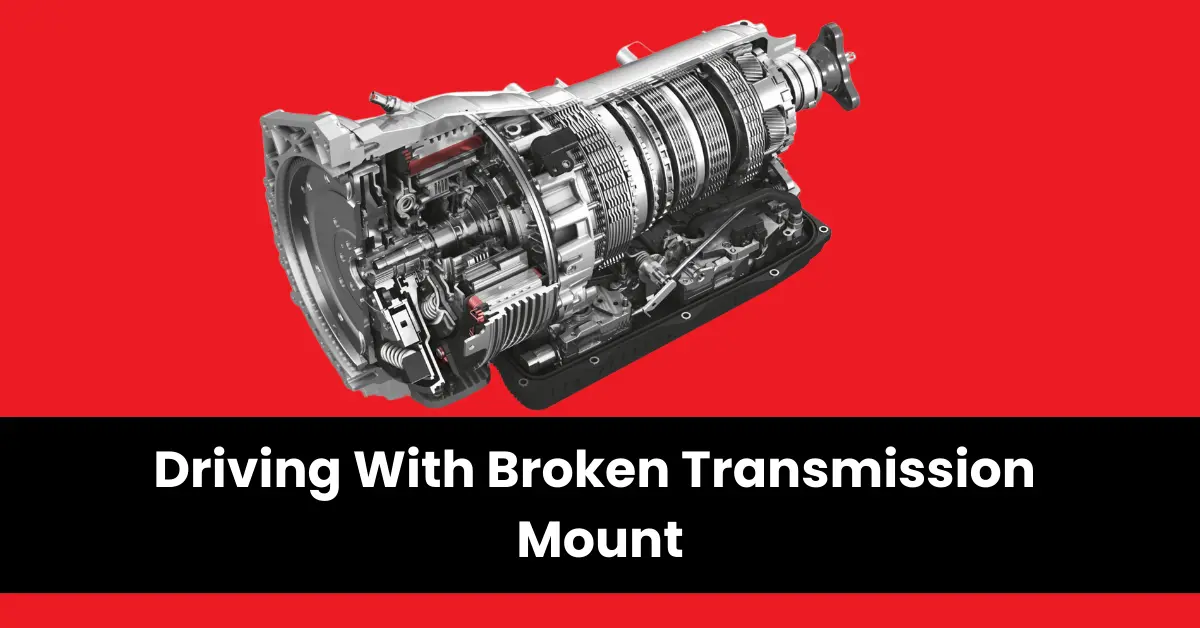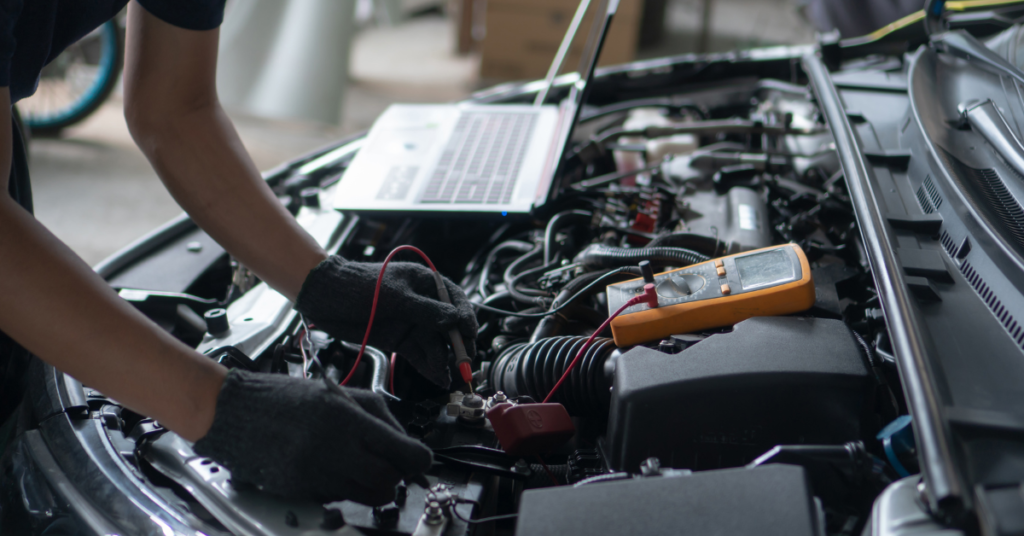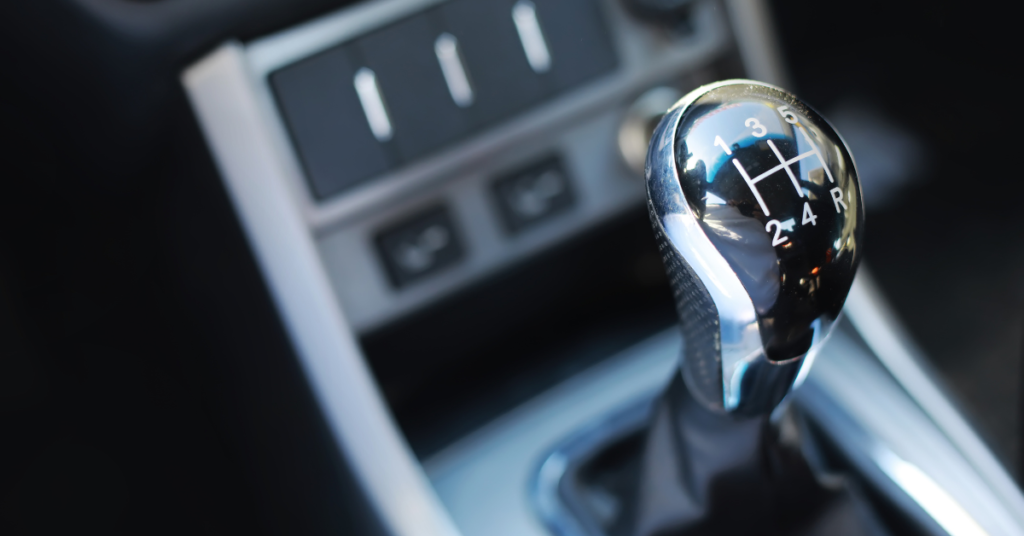
A broken transmission mount can have a significant impact on the performance and safety of your vehicle. The transmission mount plays a crucial role in supporting and stabilizing the transmission system, keeping it in place and reducing vibrations and noise.
When this mount is damaged or broken, it can lead to various issues that compromise the overall driving experience.
Contents
Signs of a Broken Transmission Mount
Identifying the signs of a broken transmission mount is essential in order to address the issue promptly. Here are some common symptoms that may indicate a problem with your transmission mount:
Excessive Vibrations

A broken transmission mount can cause excessive vibrations, especially when accelerating or shifting gears. These vibrations can be felt throughout the vehicle, from the steering wheel to the floorboards and even the seats.
Experiencing such vibrations can not only be uncomfortable but also indicate a potential issue with the transmission mount.
Clunking or Thumping Noises
Another sign of a broken transmission mount is the presence of unusual clunking or thumping noises while driving. These noises typically occur when the transmission system moves excessively due to the lack of support from the mount.
If left unaddressed, these noises can worsen over time and potentially lead to further damage to the transmission system.
Engine Movement
A damaged transmission mount can cause the engine to shift or move more than usual. This movement is often noticeable when starting the engine or when shifting gears, resulting in a rough and unstable driving experience.
Such engine movement can also lead to additional stress on other components, further compromising the vehicle’s overall performance.
Difficulty Shifting Gears

A broken transmission mount can affect the alignment of the transmission system, making it difficult to shift gears smoothly. You may notice resistance or hesitation when changing gears, which can lead to grinding or clashing sounds.
This not only affects the driving experience but also puts strain on the transmission system, potentially resulting in further damage if not addressed promptly.
Driving with Broken Transmission Mount | Dangers
Driving with a broken transmission mount can pose significant risks to both the vehicle and its occupants. Ignoring this issue can have the following dangers:
Transmission Damage
A broken mount can cause excessive movement and misalignment of the transmission system, leading to increased wear and tear on the transmission components.
Over time, this can result in severe damage and potentially costly repairs, or even a complete transmission failure. By addressing the broken transmission mount promptly, you can prevent further damage to the transmission system and avoid expensive repairs.
Drivability Issues
The excessive vibrations and movements caused by a broken transmission mount can affect the overall drivability of your vehicle.
It can make steering more difficult, reduce vehicle stability, and compromise your ability to control the car effectively, especially at higher speeds or during sudden maneuvers.
This can not only make driving uncomfortable but also increase the risk of accidents or loss of control.
Safety Risks
A broken transmission mount can impact the safety of the vehicle and its occupants. The increased vibrations and movements can affect other critical components, such as the exhaust system, fuel lines, and electrical wiring.
These secondary damages can further compromise the safety and reliability of the vehicle, potentially leading to accidents or breakdowns.
By addressing the broken transmission mount promptly, you can ensure the safety of yourself and your passengers.
Taking Action and Preventive Measures
If you suspect or confirm a broken transmission mount, it is crucial to address the issue promptly. Here are some steps you can take:
Inspection
Start by visually inspecting the transmission mount for any visible signs of damage, such as cracks, excessive wear, or detached bolts. However, keep in mind that some damages may not be immediately visible, so it is recommended to have a professional inspection.
A qualified mechanic or transmission specialist will be able to thoroughly assess the extent of the damage and provide appropriate recommendations for repair or replacement.
Professional Repair/Replacement
Consult a qualified mechanic or transmission specialist to assess the extent of the damage and determine the best course of action. In most cases, a broken transmission mount will require replacement rather than a simple repair.
A professional will ensure that the new mount is correctly installed and aligned, minimizing the risk of further damage or misalignment.
Regular Maintenance
To prevent future issues, it is essential to follow the manufacturer’s recommended maintenance schedule for your vehicle.
Regular inspections, including checking the transmission mount, can help detect any potential problems early on and prevent further damages.
Additionally, routine maintenance can help identify and address any other issues that may arise, ensuring the overall health and longevity of your vehicle.
Consider Upgrades
If you frequently drive in challenging conditions or engage in activities that put additional stress on your vehicle, you might consider upgrading to a more durable transmission mount.
Upgraded mounts can provide better support, reduce vibrations, and enhance overall performance, offering increased reliability and longevity to your vehicle’s transmission system.
Conclusion
Driving with a broken transmission mount can have severe consequences for both your vehicle and your safety. Identifying the signs of a broken mount and taking prompt action is crucial to prevent further damages and ensure a smooth and safe driving experience.
Remember to consult a professional for proper diagnosis and repair/replacement of the transmission mount to maintain the integrity of your vehicle’s transmission system.
Regular maintenance and inspections can also help prevent future issues and keep your vehicle running smoothly.
FAQ
What are the signs of a broken transmission mount?
Excessive Vibrations
Clunking or Thumping Noises
Engine Movement
Difficulty Shifting Gears
What are the dangers of driving with a broken transmission mount?
Transmission Damage
Drivability Issues
Safety Risks
What steps should I take if I suspect a broken transmission mount?
Inspection
Professional Repair/Replacement
Regular Maintenance
Consider Upgrades
How can I prevent future issues with my transmission mount?
Follow the manufacturer’s recommended maintenance schedule
Regular inspections and maintenance
Consider upgrading to a more durable transmission mount



